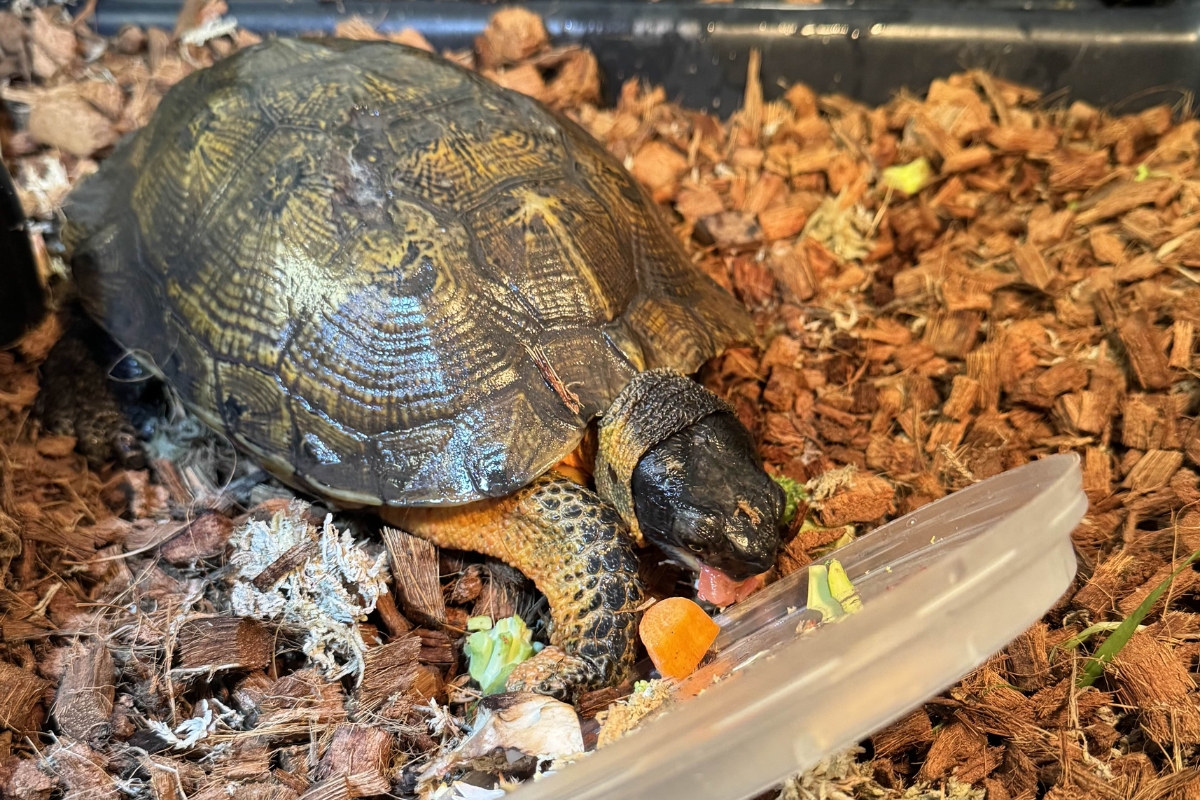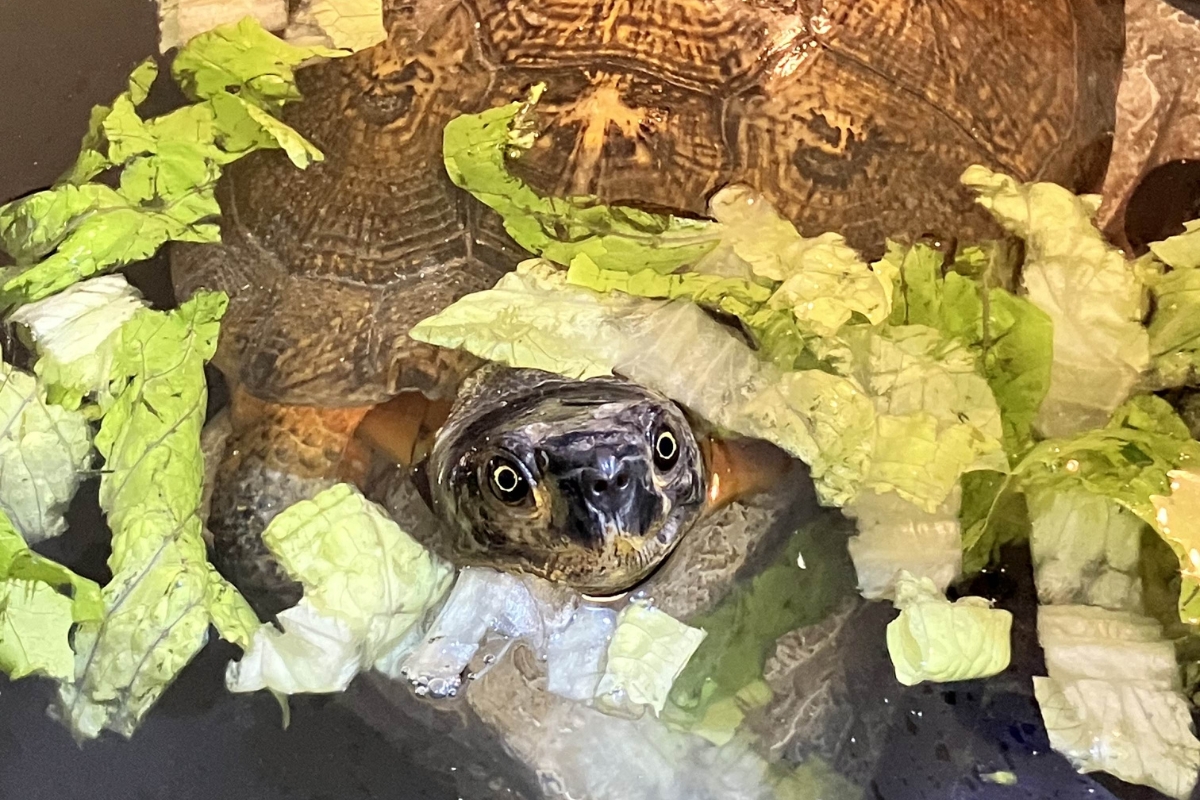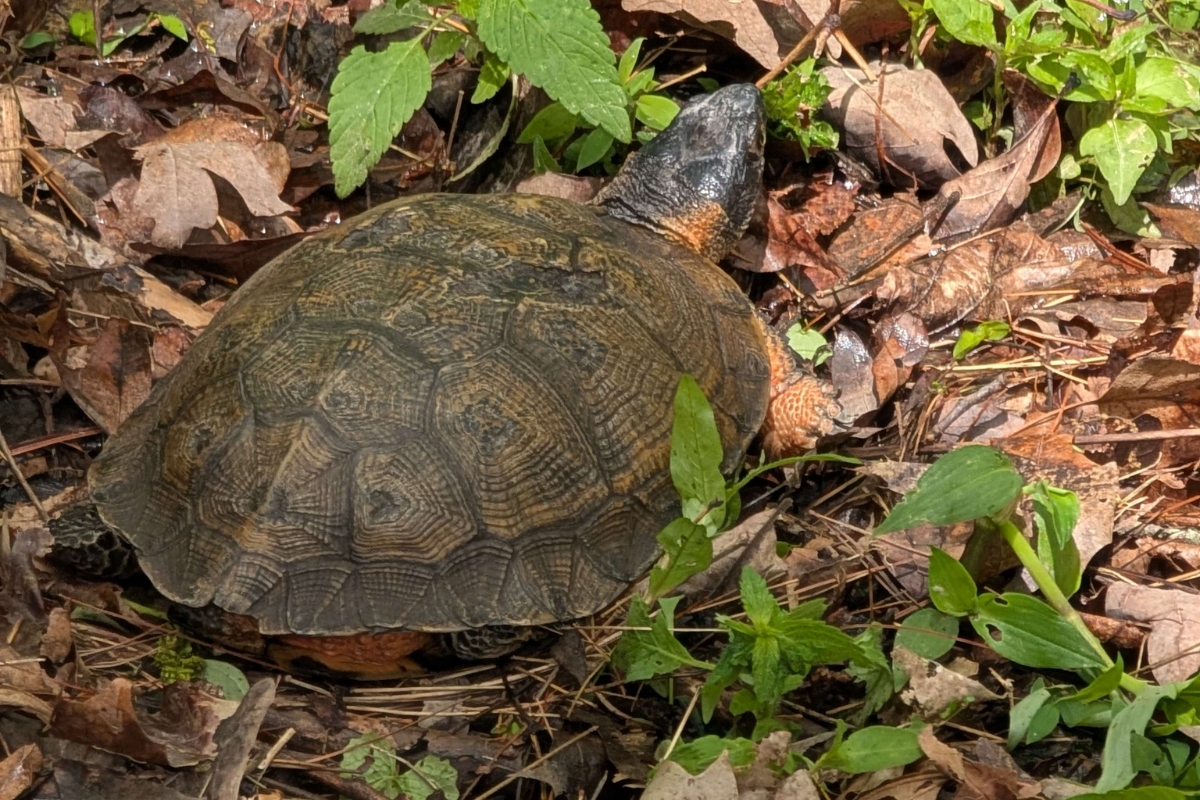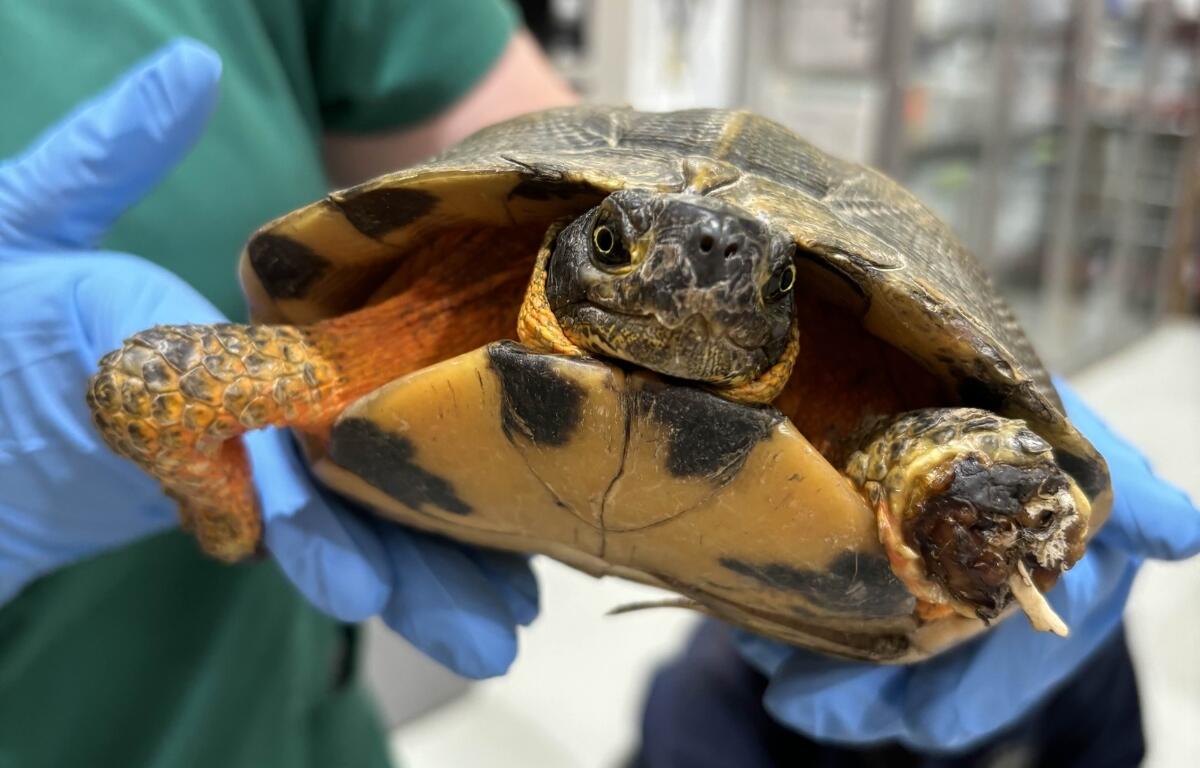ROCKINGHAM COUNTY, VA (Wildlife Center of Virginia) — On August 29, 2024, the Wildlife Center admitted a rare and seldom-seen patient: a Wood Turtle. Now, nine months later, that Wood Turtle has made its long-awaited return to the wild.
The Wood Turtle had originally been found in Rockingham County with a severely injured leg and was brought to the Center for emergency care.

Wood Turtles are semi-aquatic turtles with a brownish-gray shell and a vibrant orange color on their throat and underside. These turtles were once found in many parts of northern Virginia in streams where they prey on crayfish and other invertebrates, but their populations have declined dramatically. Today, they are listed as a threatened species in Virginia.
During her intake exam, the Center’s veterinary team found that the turtle was missing approximately half of her left front leg, with a portion of the ulna exposed. She also had old shell fractures—both on the top (carapace) and underside (plastron)—and was underweight, with a body condition score of 1.5 out of 5. The team suspects she had been attacked by a predator. Although she survived, her injuries likely made it difficult for her to move, forage, and care for herself.
The veterinary team cleaned and bandaged the turtle’s wounds and started her on antibiotics, anti-inflammatories, pain medications, and fluids. Several days later, vet staff performed surgery to fully amputate her injured leg.
“The leg was severely infected and beyond repair, and leaving it in place would have risked sepsis,” said Dr. Karra, the Center’s Director of Veterinary Services. “Fortunately, the turtle adapted well to navigating her environment with only three legs, so she could still be released once her wounds had healed.”

The turtle’s wounds proved difficult to manage, and over the next two months, the veterinary team had to treat multiple infections. By November, her condition had finally improved—but it was too late in the year to return her to the wild. Reptiles must be released by October 1, before temperatures drop too low, so the Wood Turtle remained at the Center to overwinter.
During her overwinter care, the turtle became a favorite patient of staff and was known for her great appetite. Each day, the turtles received a “dry” meal consisting of moss, egg, cricket, and minced berries. The turtle was also given greens and mealworms in her water tub, which she would enthusiastically dive into the water to eat.
Finally, spring arrived. After 259 days in care at the Center, the turtle received her final exam with the veterinary team and was cleared for release. On May 15, staff brought the turtle back to where she was found and watched as she entered the water, swimming strongly up and down the stream.

While every patient at the Wildlife Center receives the same level of expert care, threatened species like this Wood Turtle carry added significance. Center staff are hopeful that this female turtle will one day have offspring of her own and help bolster her species’ declining population.
To support the Wildlife Center of Virginia and help provide veterinary care for animals like this Wood Turtle, you can make a donation and subscribe to their newsletter.



